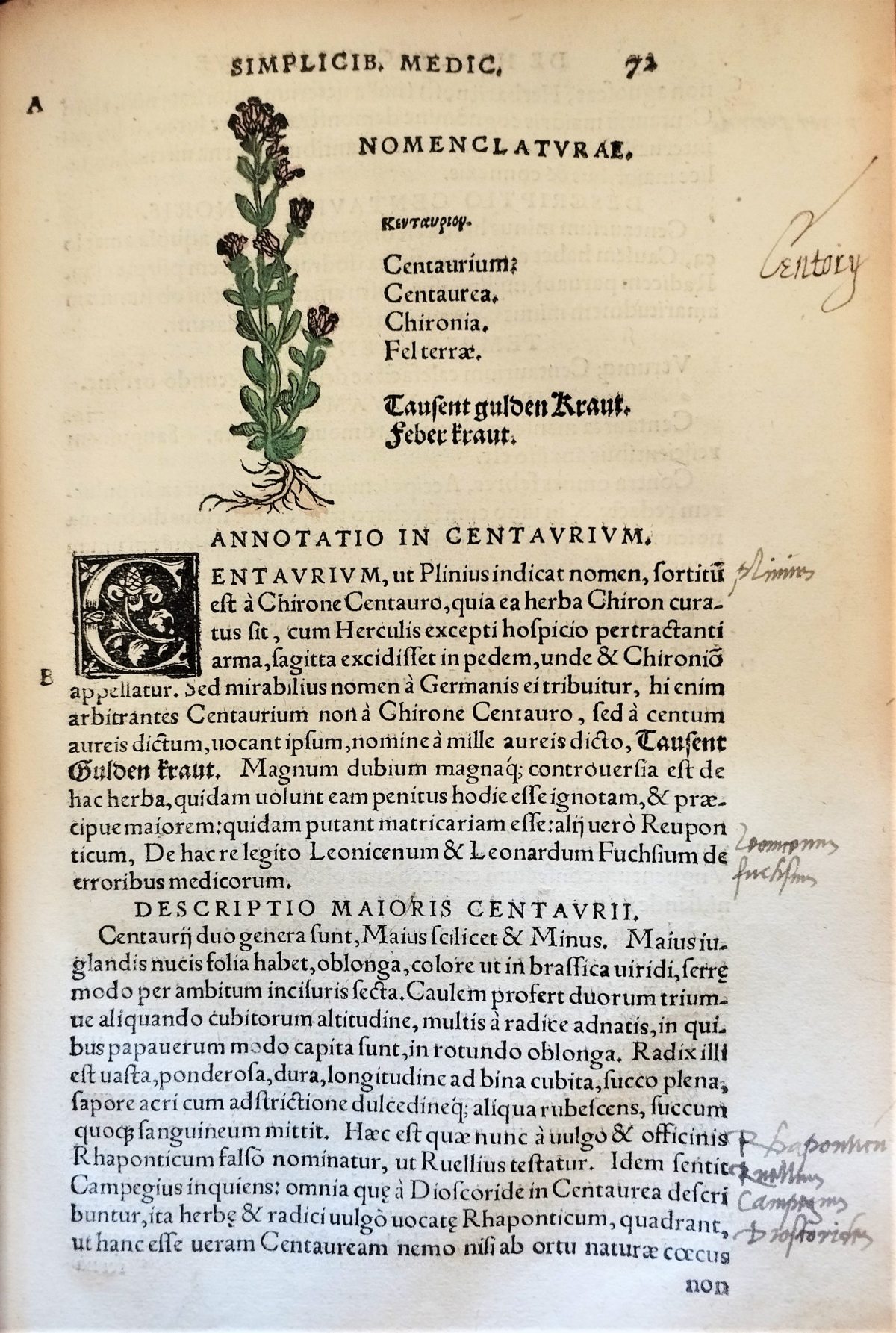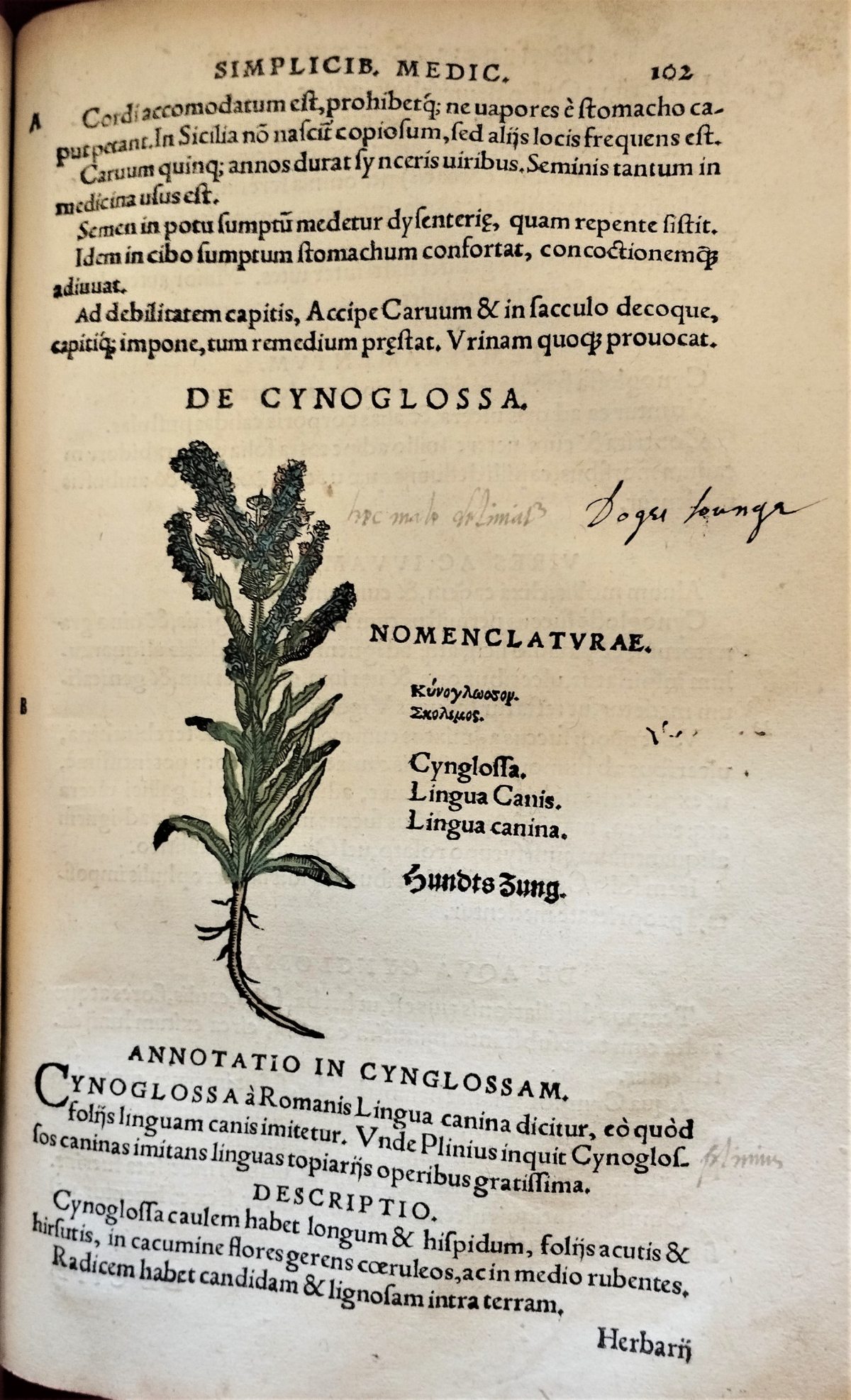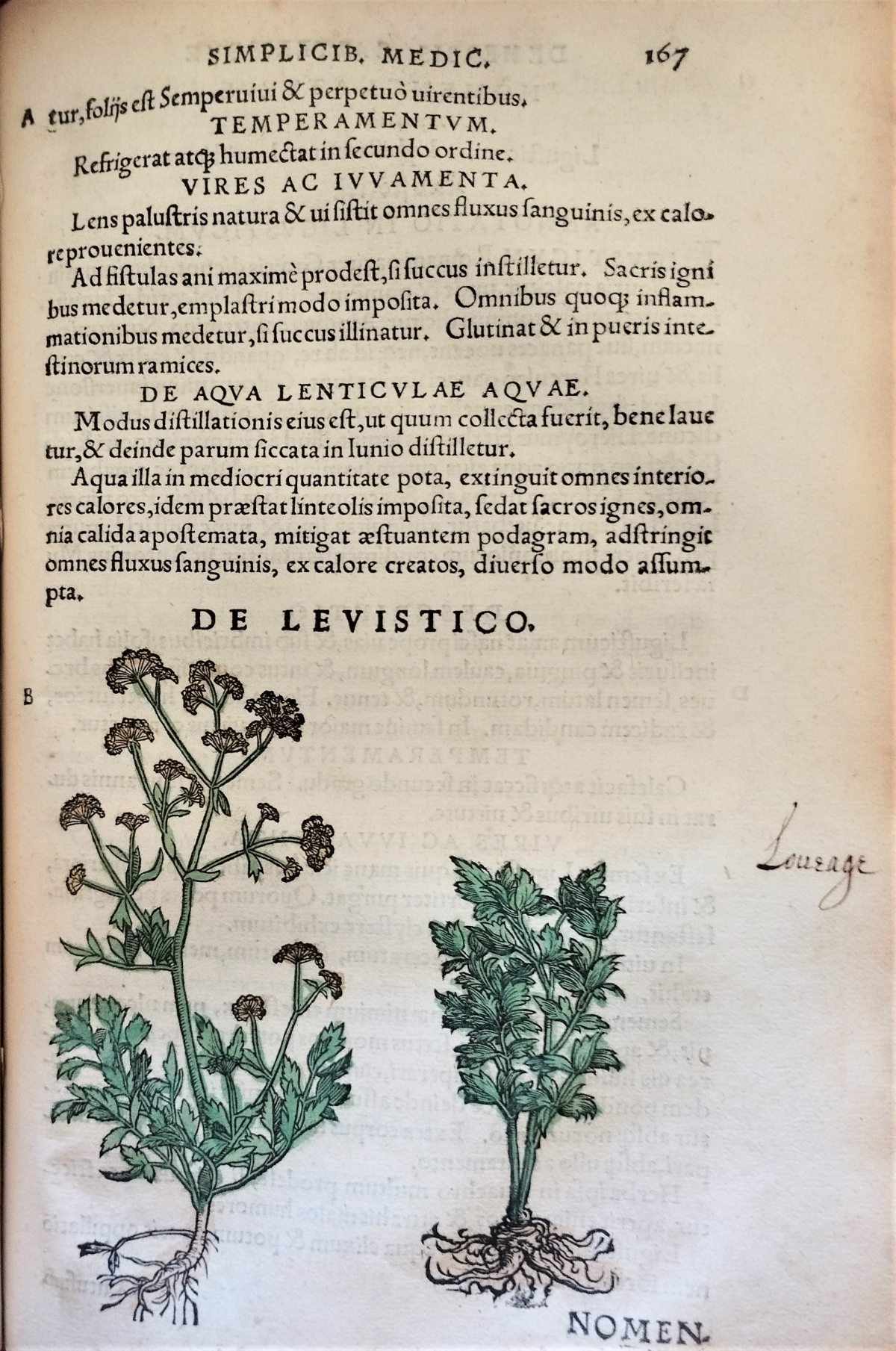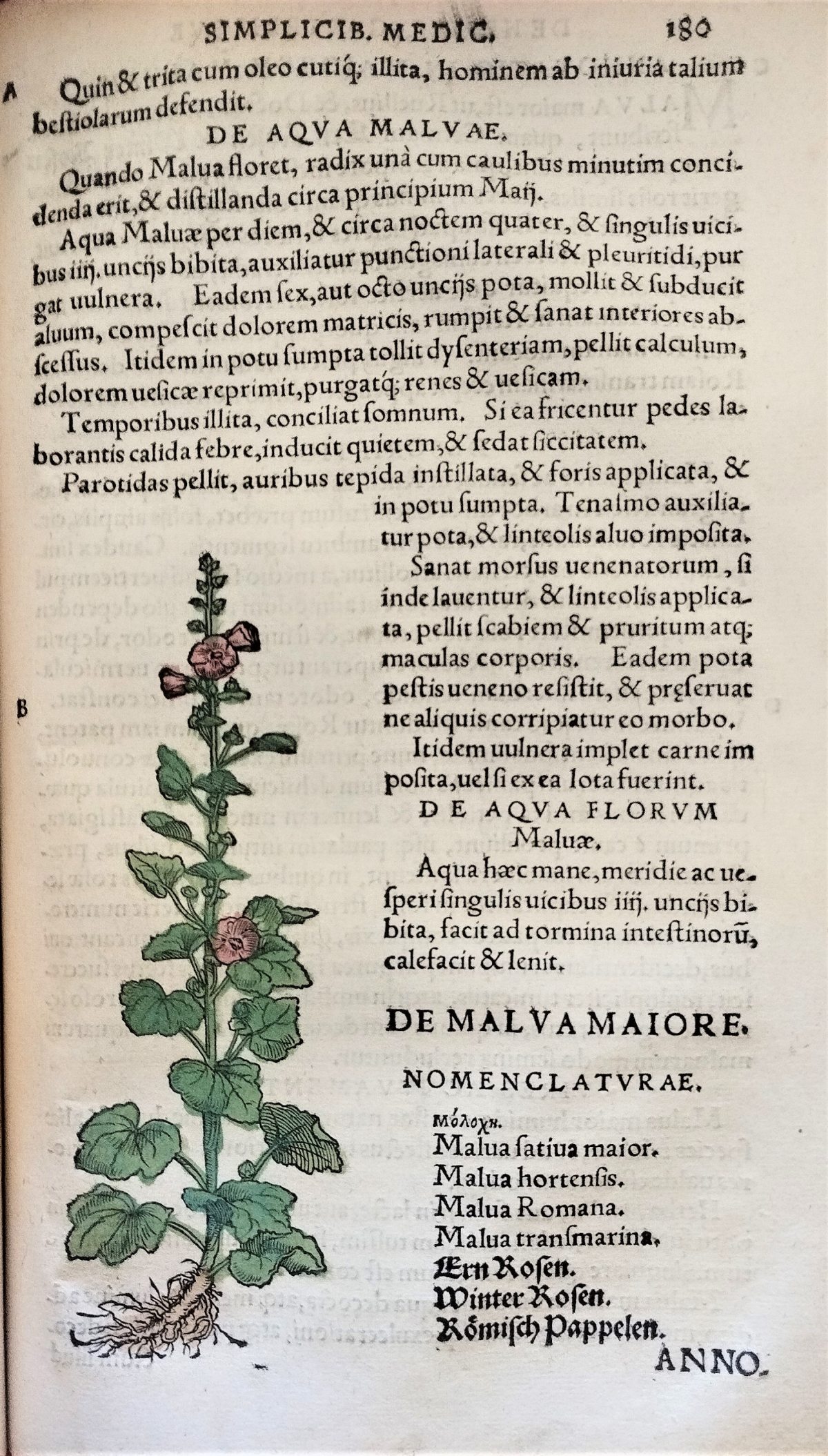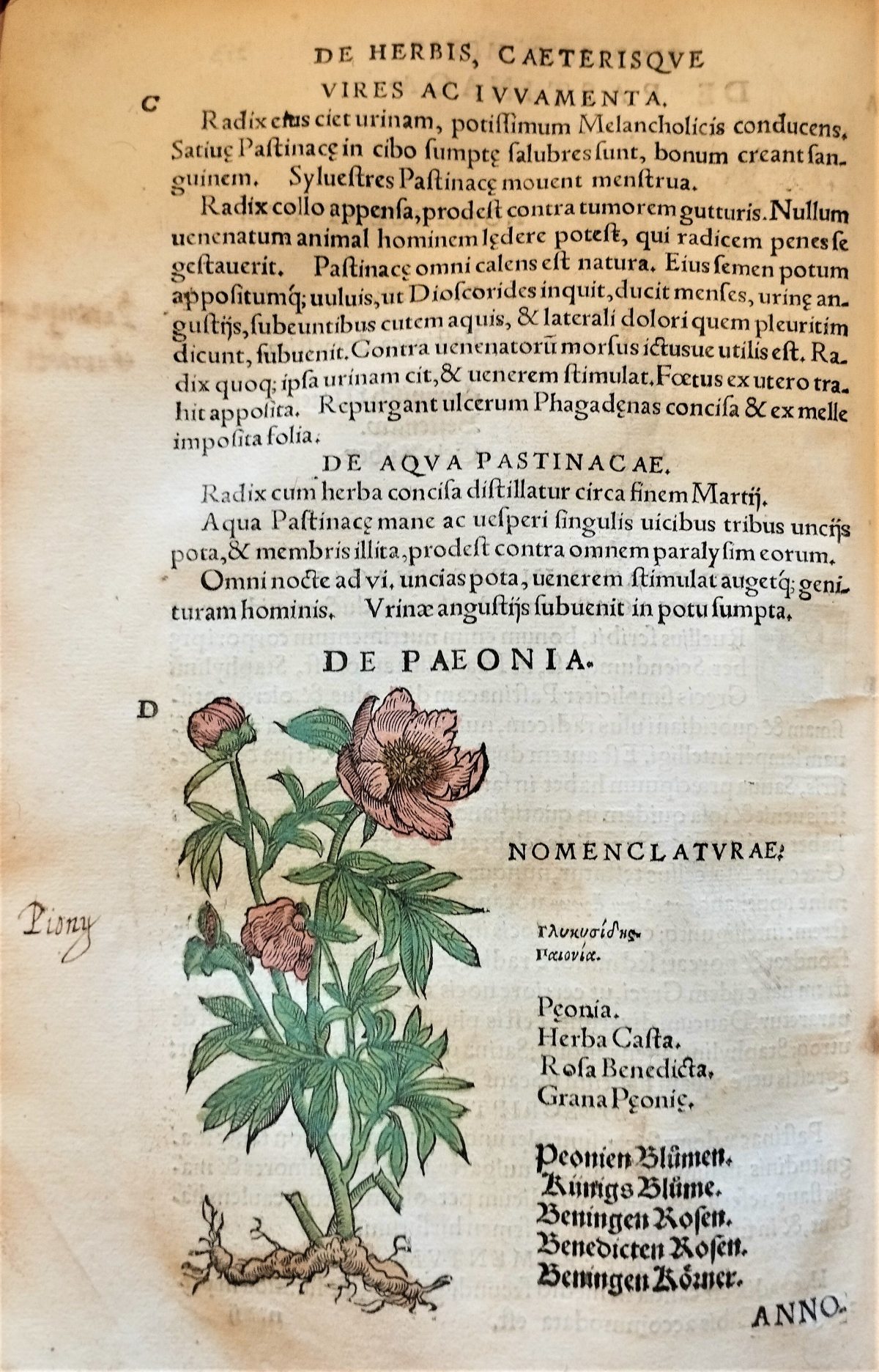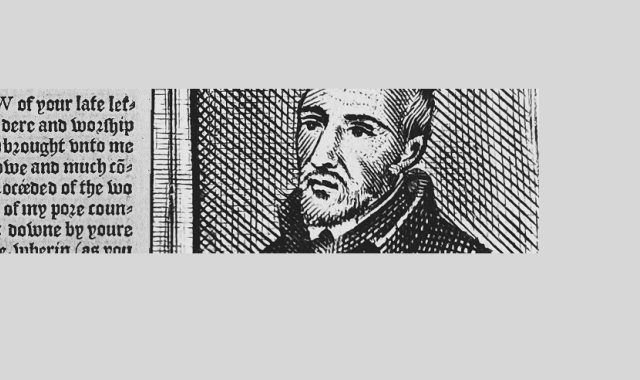A working book for an idler
Botanicon (Herbal), by Dietrich Dorsten. Printed in Frankfurt by Christian Egenolff, 1540. Lower Library, K.8.22 (3)
A herbal is a text dealing with plants, their properties and uses, placing heavy emphasis on medicinal purposes. In the early modern era of significant scientific and medical advancement, only three years before the publication of Vesalius’s magnum opus, access to physicians and medicine was the privilege of the rich and many in the world relied still on simple household remedies to common ailments; at the basis of many of such palliatives were herbs and flowers. The irony behind such manuals as the Botanicon was that books, reading and a knowledge of Latin were, similarly, often beyond reach of the poor.
Dorsten commences this work with an index in three languages: Greek, Latin, and German. He then discusses 284 plants arranged in alphabetical order, providing the name of each plant in those languages and giving a description of the plant’s potency and medicinal properties. The illustrations, which, according to the sub-title, have been drawn from life, pay particular attention to the shape of the leaves as a means of identification.
Our book is heavily annotated. Whilst its beautiful illustrations are fully hand-coloured, this was clearly a working copy. Early on the herbal was bound, as a thrifty measure, together with two other works. The first of these is a treatise on Galen, printed at Paris in 1539; its title-page is signed by Robert King (or Kynge) and dated 1614. King was a Fellow of the College, lecturer in Hebrew and a benefactor of several books following his death in 1648. The College’s Biographical History records with prurient relish King’s ‘scandalous life and conversation’, his idleness, gambling and his being ‘a common frequenter of bowling alleys’. The heavy annotations do not appear to be in King’s hand.
Hoboken’s valves << A working book for an idler >> Herbal communication


